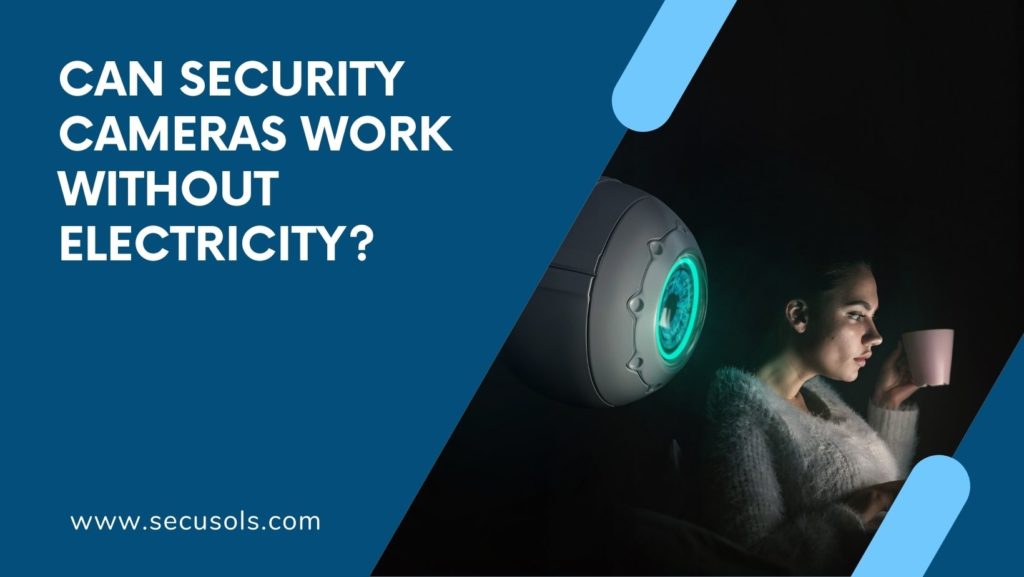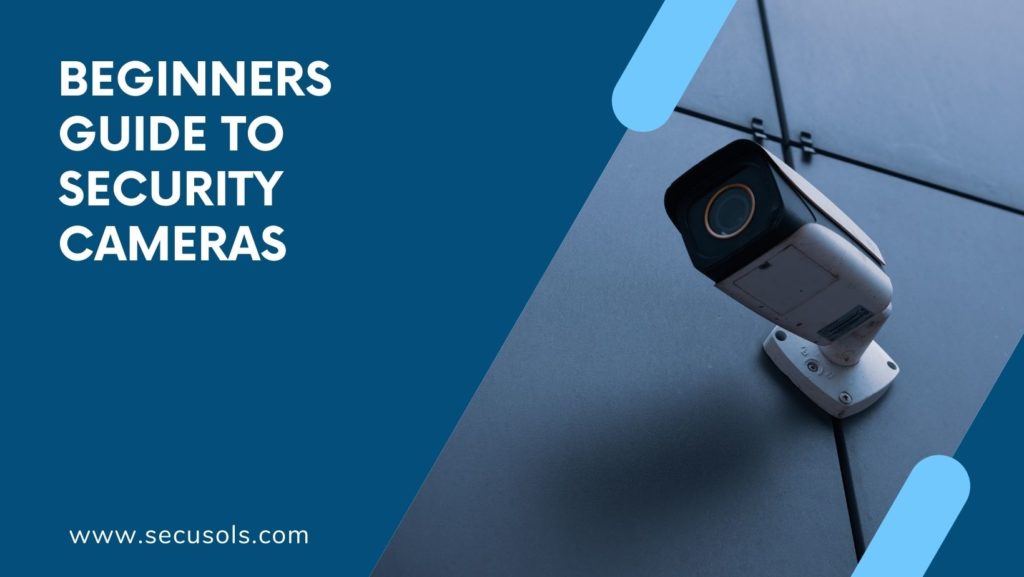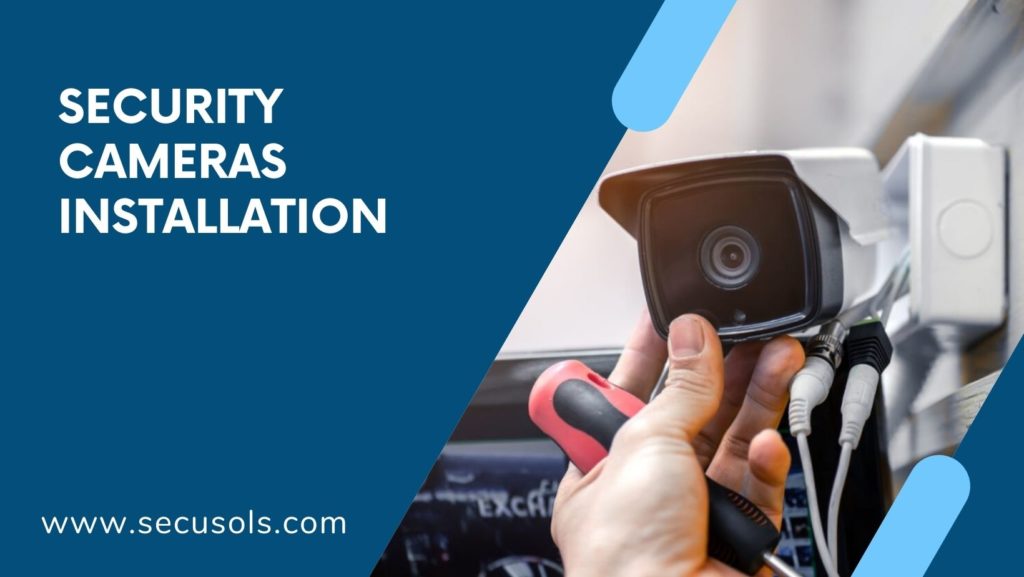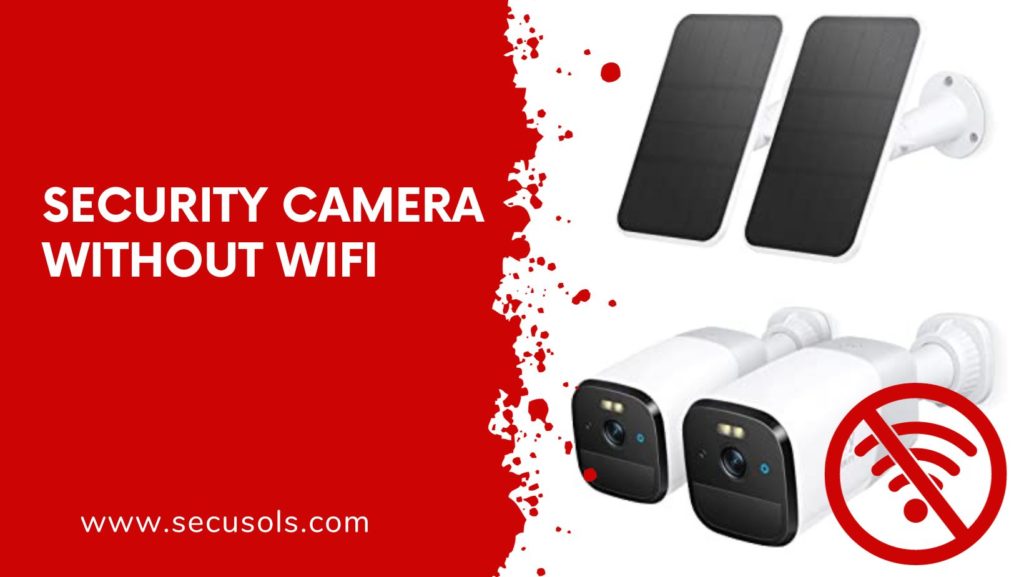Table of Contents
ToggleIn an era where security concerns are paramount, the role of security cameras has become more crucial than ever. From safeguarding our homes to monitoring bustling city streets, security cameras have woven themselves into the fabric of our lives. But here’s a thought that might have crossed your mind: Can security cameras work without electricity? Join me as we embark on a journey to unravel the doubts behind the possibility of electricity-independent security cameras.
Understanding Security Cameras
Let’s start by diving into the diverse world of security cameras. There are two main contenders in the ring: wired security cameras and their wireless counterparts. Wired cameras, as the name suggests, rely on physical connections for power and data transmission. On the flip side, wireless cameras break free from the shackles of wires, communicating via Wi-Fi or other wireless technologies.
Now, let’s peek under the hood of a typical security camera system. Four vital components keep the show running seamlessly:
- Camera Unit: The star of the show, capturing the visual data that paints the security picture.
- Power Source: Ah, the heart of the matter! Traditional security cameras draw power from the electrical grid, but we’re here to see if there are alternatives.
- Data Transmission: Whether it’s a thrilling chase or a leisurely stroll, the camera’s observations need to be sent somewhere—usually a monitoring center or a recording unit.
- Monitoring and Recording Unit: Think of this as the director’s chair. It’s where the collected data is stored, observed, and acted upon if need be.
So, Can Security Cameras Work Without Electricity?
Now, the million-dollar question: Can these vigilant watchers operate without the hum of electricity? The answer is a resounding “yes”! Let’s explore some ingenious approaches that power these cameras when the lights go out.
A. Battery-Powered Security Cameras:
Batteries to the rescue! These cameras are equipped with built-in batteries that can keep them running for a significant amount of time. Perfect for those unexpected power outages.
B. Solar-Powered Security Cameras:
Harnessing the power of the sun, these cameras have solar panels that charge batteries during the day, ensuring uninterrupted surveillance even at night.
C. Hybrid Systems:
Blending conventional power sources with alternative ones, these systems offer the best of both worlds. They’re ready to kick in when one source falters.
Limitations of Traditional Electricity-Dependent Cameras
Ah, traditional electricity—a dependable friend but not without its limitations. Let’s shine a light on a couple of hurdles these cameras face:
- Vulnerability during Power Outages: When the grid goes down, so do traditional electricity-dependent cameras. This vulnerability leaves blind spots precisely when surveillance is most crucial.
- Reliance on Continuous Power Supply: These cameras rely heavily on a consistent power supply. Interruptions in power can mean gaps in monitoring, leaving spaces susceptible to security breaches.
Innovative Approaches to Powering Security Cameras
Now, here comes the exciting part—innovation that’s changing the game and breaking the chains of electricity dependency:
A. Battery-Powered Security Cameras
- Advantages and Drawbacks: Battery-powered cameras are like the nimble acrobats of the security world. They offer flexibility in placement and function during power cuts. However, they come with the task of regular recharging or battery replacement.
- Strategies for Maximizing Battery Life: Smart tech is at play here. Motion-activated recording and sleep modes help stretch battery life. Plus, advancements in low-power camera technology are pushing the boundaries.
B. Solar-Powered Security Cameras
- How Solar Panels Work: Solar panels on security cameras absorb sunlight, converting it into electrical power. It’s a clean, renewable source of energy that’s perfect for remote or off-grid locations.
- Benefits in Remote Areas: Picture this: a camera perched on a remote cabin, powered by the sun. Solar-powered cameras bring surveillance to places where traditional power sources are a distant dream.
C. Hybrid Systems: Combining Electricity and Alternative Sources
- Reducing Grid Dependence: Hybrid systems combine traditional electricity with alternative sources like batteries or solar panels. This setup ensures cameras stay operational, even if the grid winks out.
- Ensuring Uninterrupted Surveillance: Hybrid systems act as fail-safes. When one power source stumbles, the other steps in, ensuring that the watchful eyes of these cameras never close.
In a world where power is paramount, these innovative approaches to powering security cameras are transforming how we keep our spaces safe. From battery-powered marvels to sun-soaked guardians and the harmony of hybrid systems, the future of surveillance is being rewritten.
Real-World Examples of Non-Electricity Dependent Security Cameras
Let’s shift from theory to practice as we delve into some awe-inspiring real-world applications:
Case Study 1: Remote Wildlife Monitoring
Imagine monitoring elusive wildlife in far-off locations. Solar panels soak up sunlight during the day, storing energy for night-time observations. Battery power ensures these cameras capture the secrets of the wild without disturbing the environment.
Case Study 2: Urban Surveillance with Kinetic Energy
Urban environments are brimming with kinetic energy. Cameras embedded in high-traffic areas can utilize the motion of pedestrians to generate power, allowing them to keep watch tirelessly while blending seamlessly into the cityscape.
Case Study 3: Wireless Power Transmission for Industrial Security
Industrial zones are often vast and challenging to wire. Enter wireless power transmission—cameras in these areas draw energy from strategically placed transmitters, ensuring constant surveillance in even the harshest environments.
Factors Affecting the Viability of Non-Electricity Dependent Cameras
Picture this: cameras that run on their own, independent of power sockets. But as with any innovation, there are practical considerations to bear in mind:
A. Geographic Location and Sunlight Availability
- The Power of Location: For solar-powered cameras, the sun plays a pivotal role. Cameras located in sun-soaked areas have a clear advantage in harnessing solar energy. Places with prolonged cloudy days might need alternative solutions.
- Remote and Dimly-Lit Areas: In areas with limited sunlight, like forests or shaded urban corners, innovative energy harvesting methods become crucial. These can range from kinetic energy generated by nearby movement to thermal energy from temperature differences.
B. Camera Placement and Energy Needs
- Strategic Placement: Placing cameras strategically to maximize exposure to sunlight or kinetic energy sources is key. Equally important is ensuring the camera’s field of view isn’t compromised by obstructions.
- Balancing Power and Function: The energy needs of a camera should align with its functions. More advanced features, like pan-tilt-zoom capabilities or high-definition streaming, can increase power requirements. Efficient camera design and power management are crucial here.
C. Maintenance and Upkeep Considerations
- Battery Management: For battery-powered cameras, maintaining optimal battery life is essential. Regular monitoring and management help avoid unexpected downtime.
- Solar Panel Care: Solar panels need to be kept clean and free from obstructions. Regular maintenance ensures they’re operating at peak efficiency, powering cameras effectively.
Future Prospects and Challenges
A. Advancements in Energy Storage Technologies
- Next-Gen Batteries: Imagine batteries that last longer, charge faster, and are more efficient. Advancements in battery technology are on the horizon, promising even more reliable energy sources.
B. Integration of AI for Optimized Power Consumption
- Smart Power Management: AI algorithms can predict energy needs based on usage patterns, weather conditions, and other variables. This optimization can lead to cameras that use power more intelligently.
C. Security Concerns and Data Protection in Remote Systems
- Data Security: As cameras move away from traditional power setups, securing the data they capture becomes paramount. Encryption and secure transmission protocols ensure that valuable information remains protected.
Conclusion
As we journey through the fascinating world of non-electricity dependent security cameras, it’s evident that this innovation is more than just a novelty—it’s a practical solution that’s reshaping the way we think about surveillance. While factors like location, placement, and maintenance pose challenges, the prospects of improved energy storage and AI integration hold promise. The evolving landscape of security technology is set to bring us even more remarkable feats, pushing the boundaries of what’s possible.





